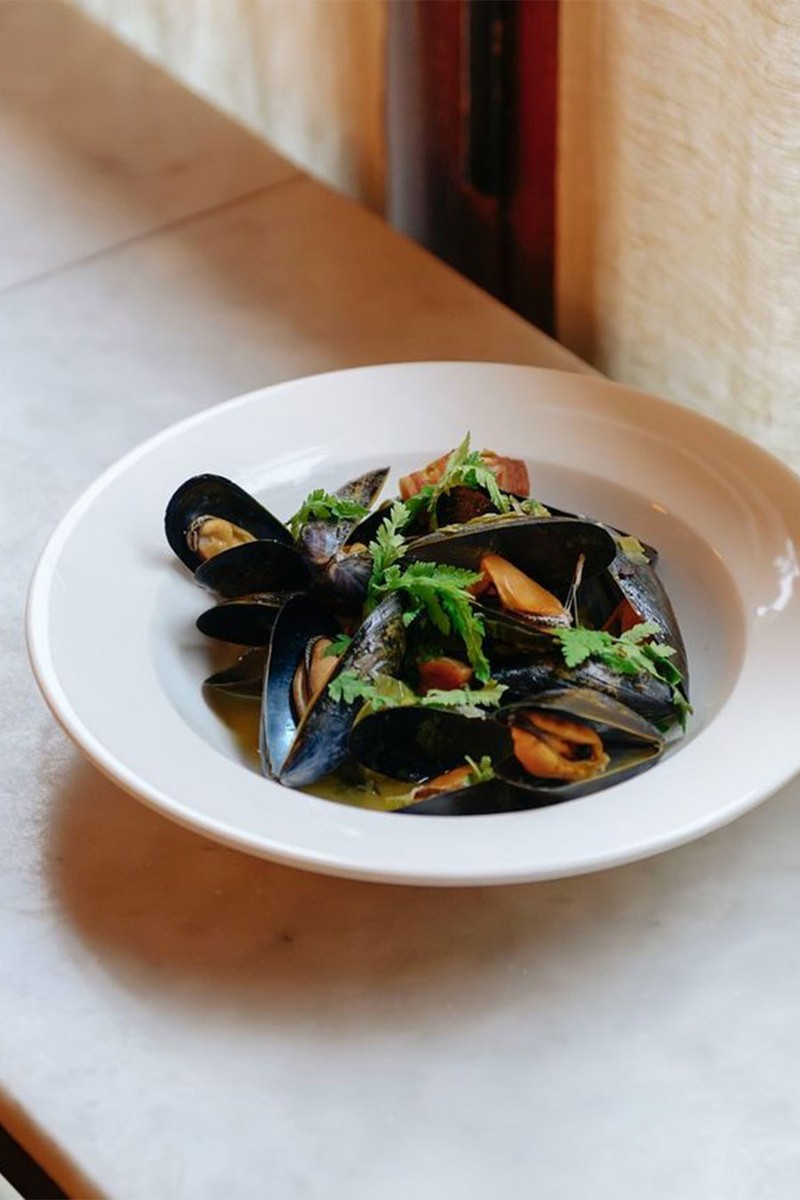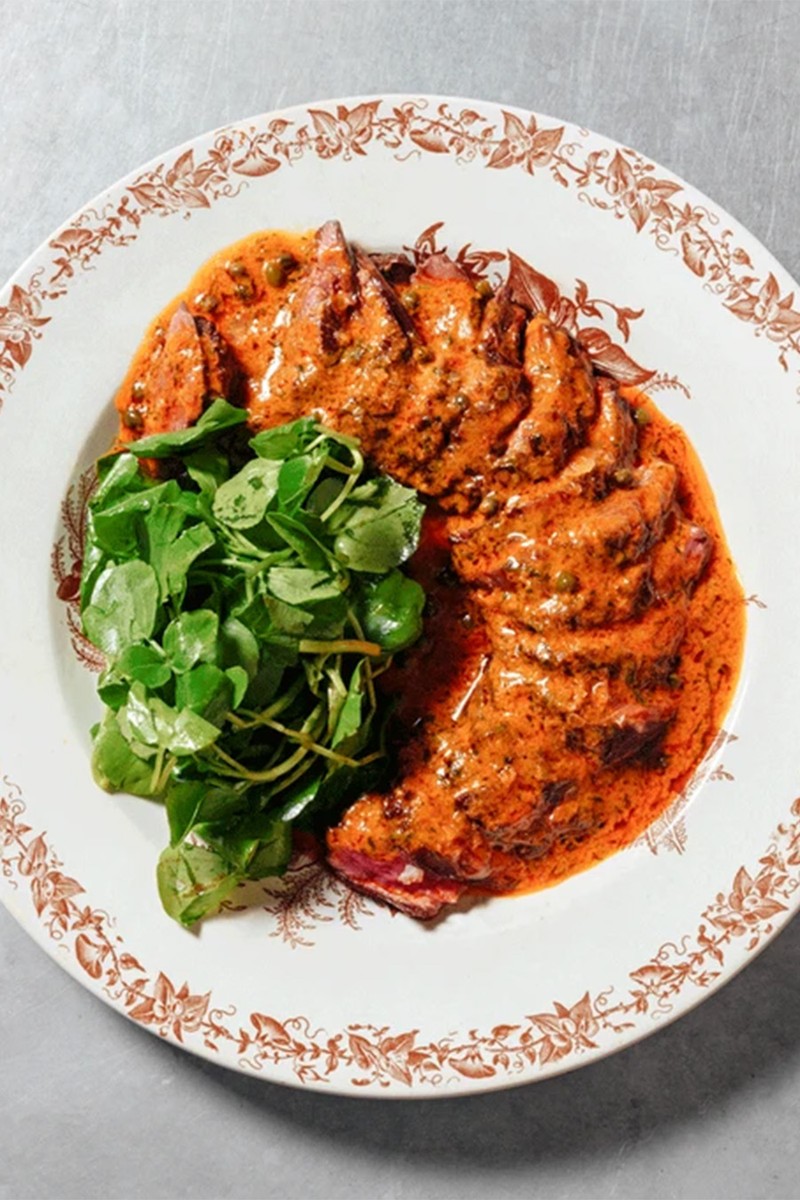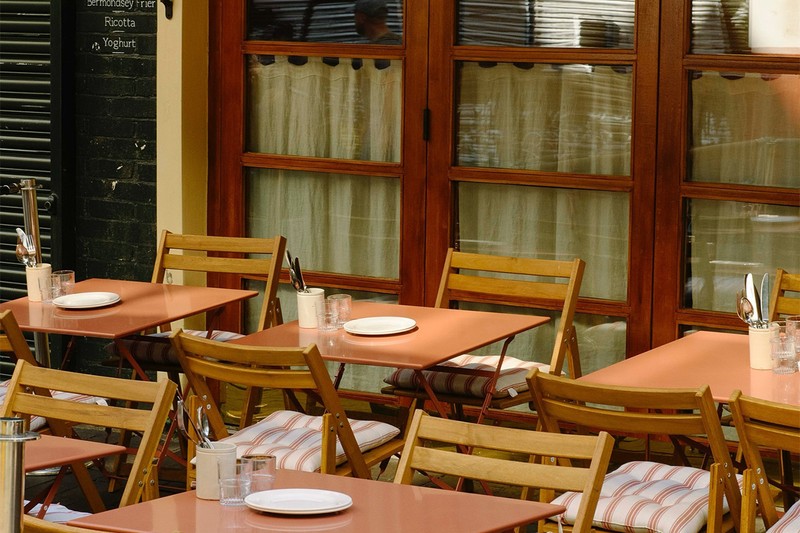
A Borough Market Chef Shares 3 Recipes & A Fun Cooking Playlist
Did you always want to be a chef?
I grew up in and around restaurants. My grandfather was a leather maker and my great-grandmother ran a butcher's shop. Whole carcass cooking and being a chef is in my blood. Initially, I studied English and wanted to be a writer, but my love for produce and the industry pulled me in – and I've never looked back.
Why are music and food the perfect combination?
Both are a multi-sensory experience. They evoke passion, nostalgia and emotion. How many stories are based on a good meal or bottle of wine while listening to some of your favourite songs? I'm always cooking with music on; it adds rhythm, speed and poetry. I'm into jazz and classical, both of which pair nicely with cooking. That said, give me something up-tempo or cheesy and I'll be firing on all cylinders.
What's the perfect song for cooking at Camille?
‘Stay Hungry’ by Talking Heads. The name says it all, but there's a fantastic bassline to the song, which perfectly mirrors the hustle and bustle. Camille's overall vibe can be chalked up to three music genres: classical, soul and punk. It draws on tradition but flips it on its head.
And what about Borough Market?
If Borough Market had a soundtrack, it would be ‘Helter Skelter’ by The Beatles. It’s chaotic and loud but the heart of British culture. There's so much magic in that busy market.
If your kitchen crew at Camille had an anthem, what would it be?
‘Ca Plane Pour Moi’ by Plastic Bertrand always gets the team going, but, with regret, I must say Blink 182’s ‘I Miss You’ has us all singing (shouting) at each other like it's karaoke. Dua Lipa is always a big hit too.
What’s your favourite song to unwind to after service?
‘Whisper’ by Martin Rev feels like the end credits to the day.
If one of your dishes had a song…
Our burnt milk tart would be ‘It Must Be Love’ by Madness. I'm yet to meet someone that hasn't liked it. It's such a privilege to make a dish that people genuinely love.
If you had to put one food trend on ‘mute’ this season, what would it be?
Putting anything and everything on a flatbread. Why is it at the top of every menu? People are treating them like a pizza base and misusing them.
If you could cook for one musician, who would it be and what would you serve?
Dua Lipa. A bowl of our Normandy tripe, just because.
Talk us through your playlist…
My playlist is an extension of me and my food. There are flares of classic French with other more modern Franco songs that are unique and quirky. Jazz is like a metronome in my head, it replicates my approach and attitude in the kitchen. I love these songs, they've inspired me and helped me create so many dishes.
Feeling inspired? Elliot shares three delicious recipes...

Mussels With Smoked Bacon & Cicely
This mussel dish is a nod to the Marseilles seafront. There are some smoked bacon lardons in there, there’s some fennel in there – plus a splash of pastis for more of those aniseedy flavours. If you go to Marseilles and don’t come back with a thirst for aniseed, you’re doing something wrong.
Start by rinsing your mussels to draw any grit out. Then, carefully beard the mussels by removing any fibrous threads attached. Once done, keep refrigerated.
Cube the smoked bacon into lardons and fry in a pan until crispy, set aside.
Finely dice the fennel and leeks. Add to a pan with 100g of butter, plus the garlic and fennel seeds. On a low heat, cook the vegetables until soft. This should be a slow process, as you don’t want to colour or brown the leeks, almost confit the vegetables. Once soft, set aside.
Put a pot on the hob at full heat with a lid ready. This pot should smoke when it’s hot enough but be careful not to overheat it. Add the mussels, bacon lardons, fennel and leek mix, white wine, pastis and the remaining 100g of butter, then fit the lid.
Move the pan around to mix everything together but keep it on the heat. After a few minutes, remove the lid and see if all the mussels have now steamed themselves open. If they have, great, you’re ready. If not, leave them on the heat for a little longer.
Serve in a bowl. There should be a nice buttery, aniseed-y broth around the clams. Finish with picked sweet cicely or simply eat with a baguette.

Dorset Crab & Lincolnshire Poacher Croque
There is a unique harmony between crab and cheese. A bechamel sauce based on the regional sauce of Nantua inspired this dish, as did the classic croque madame and the nutty Lincolnshire poacher – Britain’s answer to comte.
To begin, you will need to make your Nantua bechamel sauce. This will be the cheesy mixture that goes on top of the bread. Add the butter and flour to a saucepan and make a roux. Carefully cook the flour out on medium to low heat, be careful not to burn the flour or to undercook it. Add the cayenne, paprika and mustard.
Whisk in the Guinness and Worcestershire sauce. Combine carefully and then add the milk. The sauce should now resemble a bechamel (think lasagne-style sauce).
Now add the Lincolnshire poacher and whisk until smooth, silky and cheesy. The cheese should melt into the sauce beautifully.
Take the sauce off the heat, stir in the brown crab meat and transfer to a container. Place in the fridge to chill. This wants to firm up into something more solid and shapable.
While the Nantua cheese sauce is cooling, add your white crab meat to a separate bowl. Add the zest of half a lemon, 1 tablespoon of lemon juice and 1 tablespoon of mayonnaise (to help bind) and season accordingly. Place this in the fridge.
Next, toast your thick sliced tin loaf – you can do so under the grill or in the toaster.
Once your Nantua mix has reached a firmer and spreadable texture, smear it onto the toasted bread. Be sure to get all the edges and be very generous with the mix on the toast.
Place the cheese-loaded toast under the grill until it blisters, bubbles and has caramelised.
Add a heaped tablespoon of white crab mix to the cheesy toast croque and finish with some sprigs of dill or seasonal British edible wildflowers.

Hereford Onglet, Café De Paris Butter & Spoonwort
A unique, flavourful cut of beef, onglet is often overlooked but essential at Camille. It’s best seared hard for a crust, served rare to medium-rare, and sliced against the grain. Paired with Café de Paris butter – fragrant, rich and addictive – it’s unforgettable. Spoonwort, a winter salt marsh green, adds a peppery, horseradish-like bite and a vitamin boost. For the best results, bring the onglet to room temperature before cooking and let it rest afterwards.
Start by taking the onglet out of the fridge, pat dry the meat and allow it to come to room temperature while you make the butter.
Finely chop the herbs and place them into a food processor to make the butter. Blitz these for 30 seconds, then add all the wet ingredients to the processor (including the zest and garlic but not the capers).
Now, add the dry ingredients and spices. Then add the butter and season with salt. The butter should emulsify and form all as one. It should be bold both in colour and flavour. Allow the curry powder to be present but not overpowering. Finish it by stirring in the capers.
For the onglet, oil the steaks and liberally season with sea salt and cracked black pepper.
Heat a cast iron pan until smoking hot. Add the onglet to the dry pan and resist the urge to turn the steaks or move them. Allow to cook for 2 minutes and then turn over.
Once both sides have had 2 minutes and a crust has formed, you may turn the onglet more frequently (where necessary). It usually takes 6-9 minutes to cook, depending on preference. Add a small knob of butter to the pan and butter baste the onglet.
Remove the onglet from the pan and rest for 8 minutes.
While the onglet rests, slowly melt 250g of Café de Paris butter on low heat. Be aware that a high heat will split the butter; if this happens, add a dash of cold water to emulsify it again.
Dress the spoonwort in the simple mixture of chardonnay vinegar and extra virgin olive oil.
To serve, pour the Café de Paris butter onto a platter first. Then slice the rested onglet against the grain and place it onto the butter. Bundle the aromatic spoonwort to the side of the plate. Finish both the onglet and spoonwort with sea salt flakes.
Visit CAMILLERESTAURANT.CO.UK & follow @ELLIOTHASHTROUDI
DISCLAIMER: We endeavour to always credit the correct original source of every image we use. If you think a credit may be incorrect, please contact us at info@sheerluxe.com.



